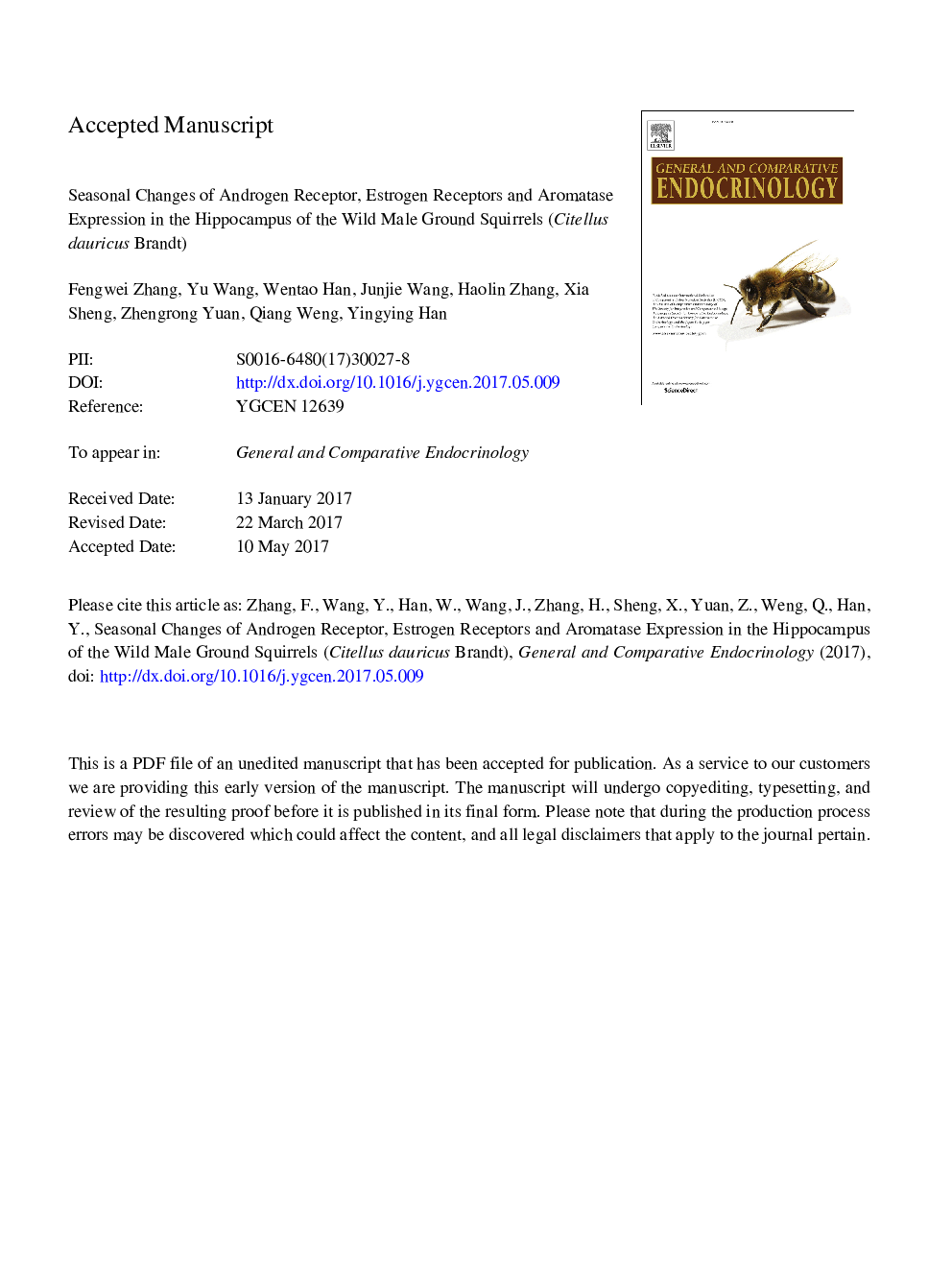| Article ID | Journal | Published Year | Pages | File Type |
|---|---|---|---|---|
| 5587728 | General and Comparative Endocrinology | 2017 | 40 Pages |
Abstract
The wild ground squirrel is a typical seasonal breeder whose annual life cycle can be roughly divided into the breeding season, the post-breeding season and hibernation. Our previous study has reported the seasonal changes in the expressions of androgen receptor (AR), estrogen receptors α and β (ERα and ERβ), and aromatase cytochrome P450 (P450arom) in the hypothalamus of male wild ground squirrels. To further seek evidence of seasonal expression of steroid hormone receptors and steroid hormone synthases in other brain regions, we investigated the protein and mRNA expressions of AR, ERα, ERβ and P450arom in the hippocampus of the male wild ground squirrels during these different reproductive periods. Histological observation showed that the number of pyramidal cells in Cornu Ammonis 1 (CA1) increased in the breeding season. Both protein and mRNA of AR, ERα, ERβ and P450arom were present in CA1 and CA3 of all seasons. There was significant increment in the immune-signal intensity and mRNA level of AR and ERα during the pre-hibernation, whereas those of ERβ and P450arom were higher during the post-breeding season. In addition, the profile of plasma testosterone concentration showed the nadir in the post-breeding season, a marked elevation in the pre-hibernation, and the summit in the breeding season. These findings suggested that the hippocampus may be a direct target of androgen and estrogen; androgen may play important regulatory roles through its receptor and/or the aromatized estrogen in the hippocampus of the wild male ground squirrels.
Keywords
Related Topics
Life Sciences
Biochemistry, Genetics and Molecular Biology
Endocrinology
Authors
Fengwei Zhang, Yu Wang, Wentao Han, Junjie Wang, Haolin Zhang, Xia Sheng, Zhengrong Yuan, Qiang Weng, Yingying Han,
